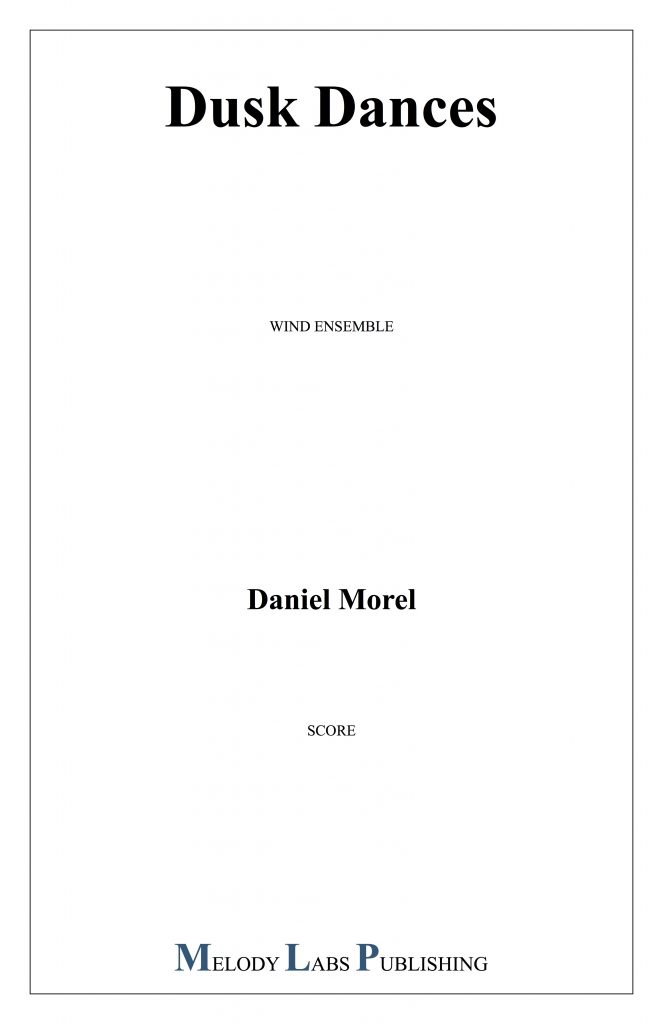
ENSEMBLE
wind ensemble
INSTRUMENTATION
piccolo, 2 flutes, 2 oboes, 3 clarinets in Bb, bass clarinet, 2 bassoons, alto saxophone, tenor saxophone, baritone saxophone, 3 trumpets in Bb, 2 horns in F, 2 trombones, bass trombones, euphonium, tuba, timpani (3), 4 percussion*
*PERCUSSION
1: glockenspiel
2: marimba, suspended cymbal
3: snare drum, suspended cymbal
4: toms (4), suspended cymbal
Optional contralto/contrabass clarinet and baritone horn parts are included in case instrument substitutions are required.
DURATION
6′ 30″
PROGRAM NOTES
Dusk is the time for reveling in the labors of the day. It’s a time for food and celebration before the night approaches with its ghostly quiet. For ages, people have danced away the evening to dispel its dread. Though not reminiscent of any particular dances, this work is meant to evoke their general mirthful spirit.
Dusk Dances opens with a steadily rising progression in the brass. A series of rising triads and woodwind flourishes augment the ascent, increasing in length and activity until all tension breaks loose. Following the brief descent, clarinets enter with the first of many dance melodies. Flutes, oboes, and eventually trumpets echo the clarinets’ melody as the dance continues to grow with frenetic tension. At its peak, all instruments join in, countering the dance with a chromatic ascent, eventually pushing it back home. The steadily rising brass begin, anew, replete with rising triads and flourishes ushering in a new dance on the trumpet. This new, tango-esque dance is accompanied by more woodwind flourishes and a brass countermelody. At the close of this melody, all woodwinds join in a canon, adding instruments to the texture as tension builds and foreshadows the final dance – a reintroduction of every melody in four part counterpoint that climaxes in a frenzy of woodwind flourishes.